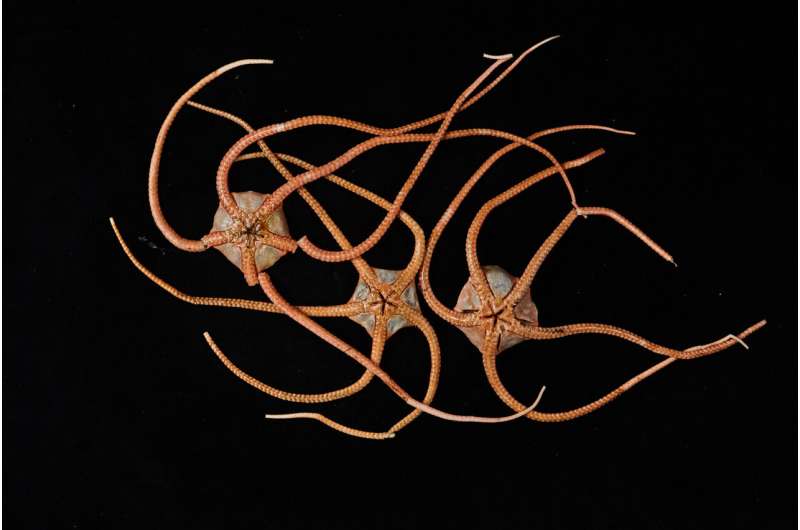
A pioneering study conducted by the Museums Victoria Research Institute has uncovered surprising connections among deep-sea marine life, revealing a level of global interconnectivity previously unrecognized. Published on July 23, 2025, in the journal Nature, the research focuses on brittle stars, a group of ancient marine invertebrates, mapping their evolutionary relationships and distribution throughout the world’s oceans.
The study analyzed the DNA of 2,699 brittle star specimens collected from 48 natural history museums worldwide. This extensive dataset showcases how these spiny animals, which inhabit environments ranging from shallow coastal regions to the abyssal plains, have migrated across vast oceanic distances over millions of years. The findings suggest a remarkable link between ecosystems from Iceland to Tasmania, offering vital insights into marine evolution over the past 100 million years.
Dr. Tim O’Hara, the study’s lead author and Senior Curator of Marine Invertebrates at Museums Victoria, emphasized the significance of these findings. “You might think of the deep sea as remote and isolated, but for many animals on the seafloor, it’s actually a connected superhighway,” he stated. Over extended periods, deep-sea species have expanded their ranges by thousands of kilometers, indicating a global phenomenon of connectivity that had gone unnoticed until now.
This research is the most comprehensive analysis of its type, utilizing specimens that have survived for over 480 million years. The study reveals that while shallow-water marine life is often constrained by temperature boundaries, deep-sea environments are more stable, allowing species to disperse across great distances. Many brittle stars produce yolk-rich larvae capable of drifting on deep ocean currents, enabling them to colonize distant regions.
The results challenge previous assumptions about marine life distribution. For instance, animals found off the southern coast of Australia share close evolutionary links with those in the North Atlantic, on the opposite side of the globe. Despite this interconnectedness, the deep sea is not uniform. Factors such as extinction events, environmental changes, and geographical barriers have created a patchwork of biodiversity across the ocean floor.
“It’s a paradox. The deep sea is highly connected, but also incredibly fragile,” Dr. O’Hara noted. Understanding the distribution and movement of life in this vast environment is critical, especially in light of increasing threats from deep-sea mining and climate change.
This groundbreaking research not only enhances our understanding of deep-sea evolution but also underscores the importance of museum collections. The DNA sampled in this study originated from specimens gathered during 332 research voyages, many of which took place decades ago. Institutions like the Museums Victoria Research Institute have played a crucial role in preserving biodiversity and facilitating international collaboration.
“This is science on a global scale,” said Lynley Crosswell, CEO and Director of Museums Victoria. “It demonstrates how museums, through international collaboration and the preservation of biodiversity specimens, can unlock new knowledge about our planet’s past and help shape its future.”
The research received support from over 40 institutions worldwide, including natural history museums, universities, and marine research organizations. The findings pave the way for future studies aimed at protecting deep-sea ecosystems, which are vital to the health of the planet.
In summary, the study marks a significant advancement in marine biology, revealing the hidden connections that bind marine life across the globe. As researchers delve deeper into these complex relationships, the implications for conservation and understanding our oceans grow increasingly vital. For further details, refer to the original study by Dr. O’Hara, available in Nature under the title “Spatiotemporal faunal connectivity across global sea floors.”







